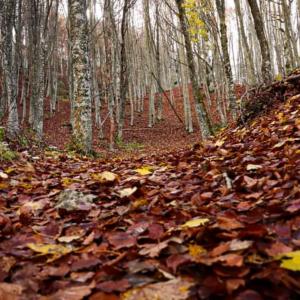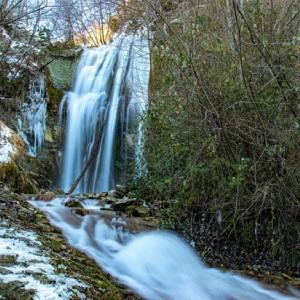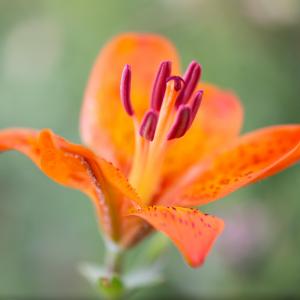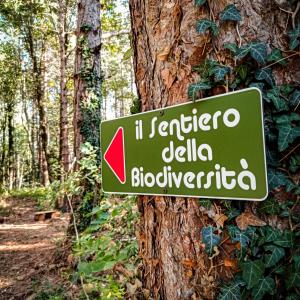Montecopiolo, nature at your fingertips
The whole territory of Montecopiolo is a real warm hug from nature and biodiversity and is renowned for its nature trails and for the abundant snow in the winter period, for which it has several ski lifts.
A part of the territory of Montecopiolo is also included in the Sasso Simone and Simoncello Regional Nature Park, while at the two extremities of the village of Villagrande, the ruins of two castles are preserved: the important and principal castle of Montecopiolo and the small castle of Mount Acuto (today Mount Saint Mark). The castle of Monte Copiolo, with its important ruins surrounded by green conifers, still provides important data for archaeological research, in addition to splendid views. Also in the municipal area are the ruins of the small castle of Mount Boaggine.
Colle Poggio is a small hill in the shape of a pyramid to be visited in silence and tranquility, taking in all its positive energy.
Today, the Poggio is a place that lies between mystery and legend.
A very distant legend tells us that this pyramid-shaped promontory contains a special kind of energy, and that in a certain period of the year when the sun goes down, it comes alive with mysterious creatures.
Speaking of the Poggio, some elders say that in ancient times, a small convent stood at the top, where friars lived with knowledge enough to be able to take care of animals and people. These are tales handed down over the centuries, words probably without any historical foundation, but is it not true that in every legend there is always a kernel of truth?
The Municipal Park of Mount Montone which extends for 85 hectares, providing fairy-tale atmospheres, made magical by the colors of the flora that change with the changing of the seasons.
The area is made up of several hundred species, some rare and important from a phytogeographical point of view, including Black Pine, White Fir, Norway Spruce, Beech, Sycamore Maple, Curly Maple, Turkey Oak, Manna Ash, Major Ash, Hop Hornbeam, Chestnut, Hazelnut, Holly, Oak and Holm oak.
It is an important heritage worthy of protection, representative of a mountain area such as that of Montecopiolo. In the municipal area of Montecopiolo there are about 40 species of wild orchids, 20 of which can be observed in the Mount Montone area.
A few centimeters in height to over a metre, the most flashy-red to the palest of green, the representatives of this family in the course of their evolution have developed the most disparate forms and strategies, from self-pollination to the complex "sexual" deception of the Ophrys type.
These marvels are protected thanks to Regional Law No. 2 of January 24, 1977 which prohibits picking them throughout the region.
Mount Hermitage
The hermitage on Mount Carpegna (1260 - 1415 a.s.l.) is located within the municipality of Montecopiolo.
The view from the slopes of Mount Carpegna is truly unique.
The horizon gives a feeling of infinity that is not likely to be forgotten. And it is precisely because of the vastness of the spaces that the town is a destination for hang gliders and fans of paragliding.
But actually, it is the whole area around the Hermitage that is full of surprises and facilities for the public. The wide lawns are ideal for getting in touch with nature, even with very young children in tow. It will be a discovery to see herds of grazing cows or buzzards perching on the branches of the trees. In winter, the ski lifts and chair lifts are active on these slopes, and you can ski, with the possibility of artificial snow on the slopes when needed.
The Small Waterfalls of the Conca
The Conca River originates in the Municipality of Montecopiolo on the slopes of Mount Carpegna at 1415 meters above sea level and flows into the sea near Cattolica after a journey of about 45 km.
Near Ponte Conca, the river forms delightful small waterfalls that make this part of the landscape picturesque, a small unpolluted corner of Montefeltro that can be reached via a short trail inside Simone Park.
Mount Saint Mark (Mount Acuto)
On Mount Saint Mark it is possible to find the ruins of old artifacts, such as a monolithic quadrangular compartment or a circular tower, since the part of the mountain subject to quarrying cannot be climbed, while the remaining side is fenced off, as it is private property.
The peaks of Mount Saint Mark, of Montone, and of the Castle of Montecopiolo, in the upper part of the Conca valley are part of Val Marecchia; they were created when San Marino was formed, and they represent a valuable and distinctive element of the landscape. Above Mount Saint Mark (formerly Mount Acuto), there has been an important castle subjected to the counts of Montefeltro since the 13th century. Today, the only remaining trace of the castle are some large masses of debris from its collapse. Near the fortification, there was a church, dedicated to Saint Mark. Tradition has it that, inside the church, there was "the Pope's bed", i.e. an enormous boulder - called genga - dug out to form a sort of rectangular tub.
An engraved cross is clearly visible on the bottom of the tub, still today, and it was already a destination for pilgrimages in the 17th century, as can be seen from some chronicles of the time. The trail to reach the mystical site of the "Pope's bed" (or of Saint Mark) starts from an expanse of pebbles: landslide detritus and quarry detritus since, on this peak, up until a few decades ago, a quarry was active which, fortunately, failed to damage the archaeological area located on the top.
Monteboaggine Castle
The name Monteboaggine means "Mount of Oxen" due to the grazing of cattle that has been practiced in this area since ancient times.
A gem of the place is the ancient castle of Monteboaggine, of which the bell tower and some traces of the ancient hamlet and church remain today. Before arriving at the castle, on the right, there is a small cemetery in use until the 1940s, and a chapel.
From the castle (964 m a.s.l.) you can see the surrounding mountains and valleys all the way to the sea.
Historical evidence concerning Monteboaggine can already be found in the 14th century. It was a possession of the Counts of Montefeltro, then it passed to the Dukes of Urbino, and entered the State of the Church in 1631. After a period of confusion in the Napoleonic era, with the restoration, in 1816 Monteboaggine lost its autonomy and administration, becoming a district of the current Municipality of Montecopiolo.
The inhabitants of Monteboaggine, as in past centuries, are mainly engaged in work related to the land and farming; as far as agricultural products are concerned, the Monteboaggine potato is renowned, a tuber rediscovered a few years ago with unmistakable characteristics: It keeps for a long time and "never overcooks", ideal for gnocchi, but excellent in all recipes.
As far as breeding is concerned, the local companies deal with cattle (not to deny the tradition of the name) and pigs, and sell their meat far beyond the borders of Montefeltro. Until a few decades ago transhumance was widely practiced: many shepherds left from Monteboaggine with their herds in October, especially heading towards the Maremma, to return in June of the following year.
Monteboaggine is the ideal place to spend the summer in the open air and the winter immersed in snow. For winter sports enthusiasts, you have to go through there in order to reach the Hermitage ski slopes. Being part of the "Regional Park of Sasso Simone and Simoncello", there are various itineraries which include a visit to the castle of Monteboaggine and the peaks of the Hermitage. The Park Authority has created the Environmental Education Center in Calvillano, a shelter for mountain lovers on excursions.
Info: Giancarlo 3474953126 | Melissa 3470381254



